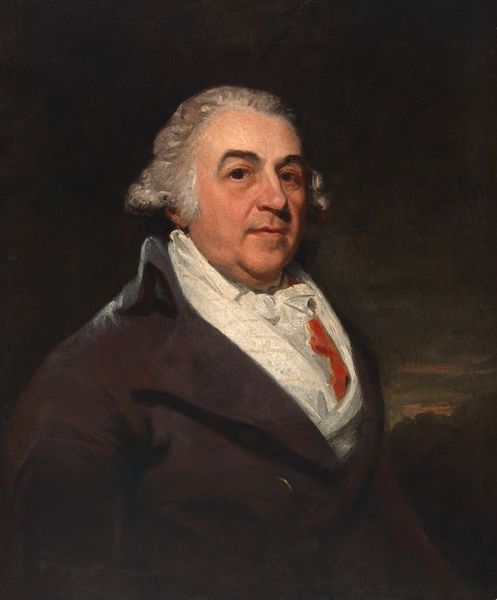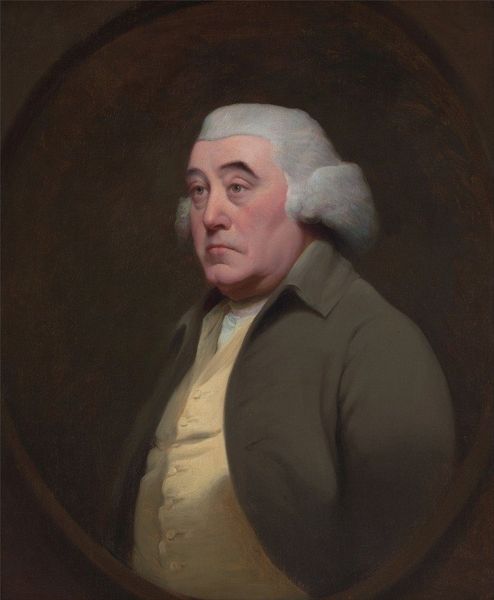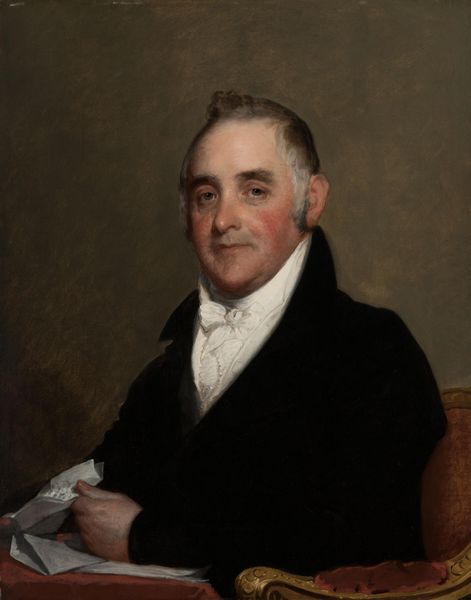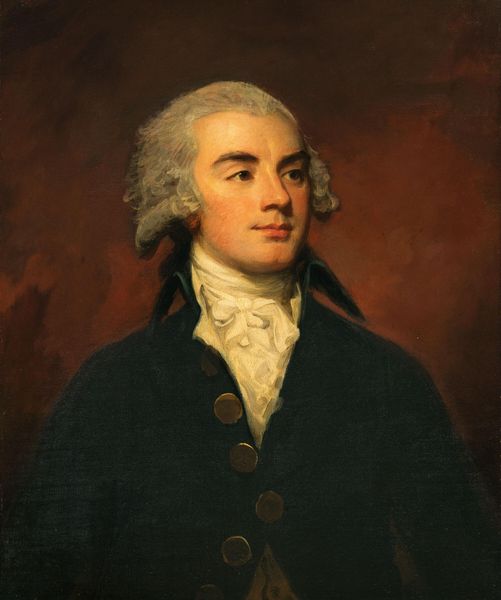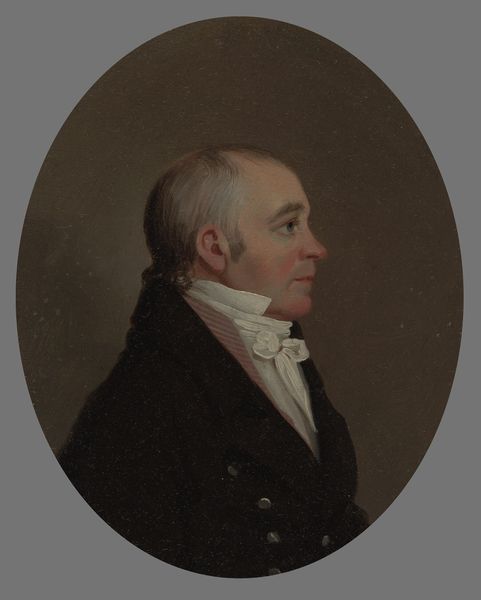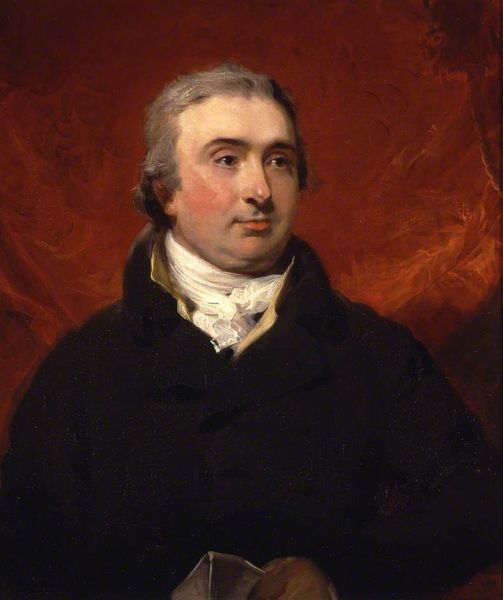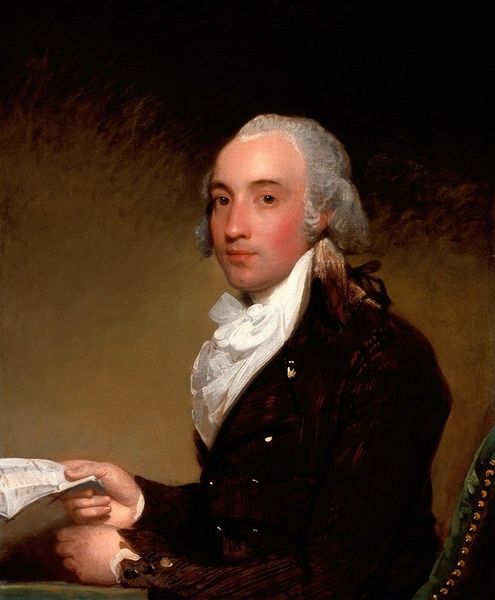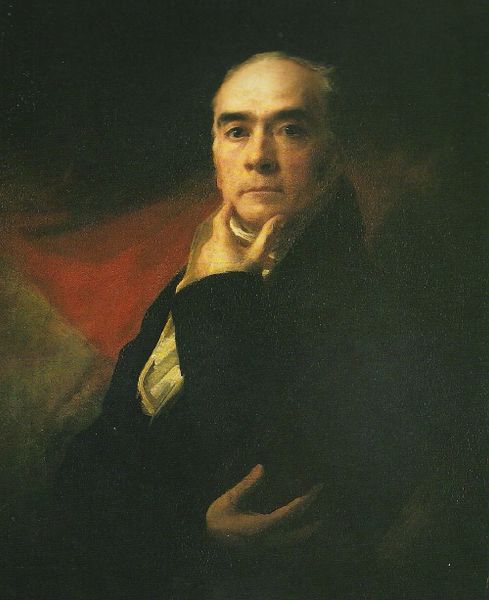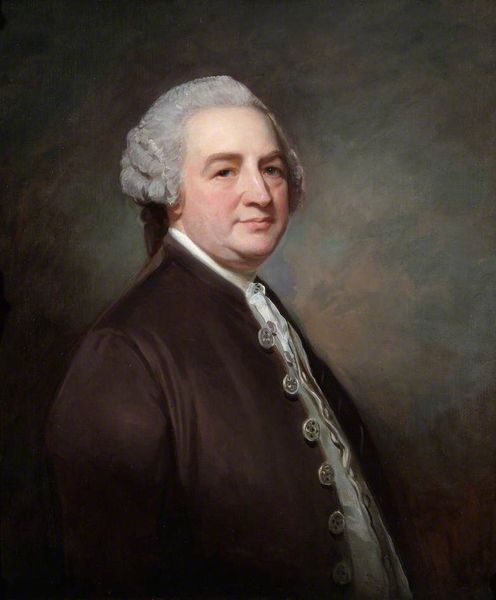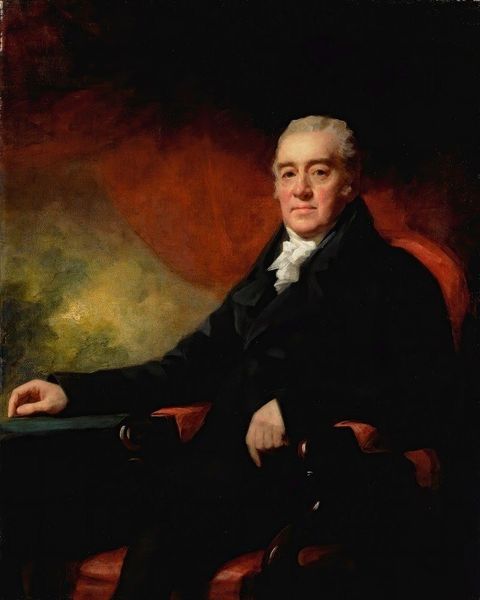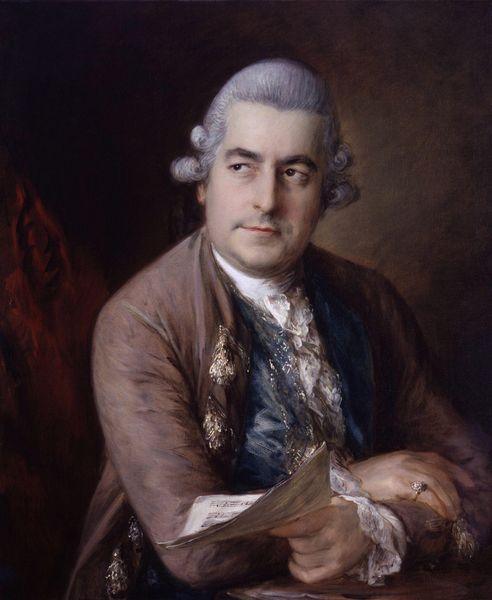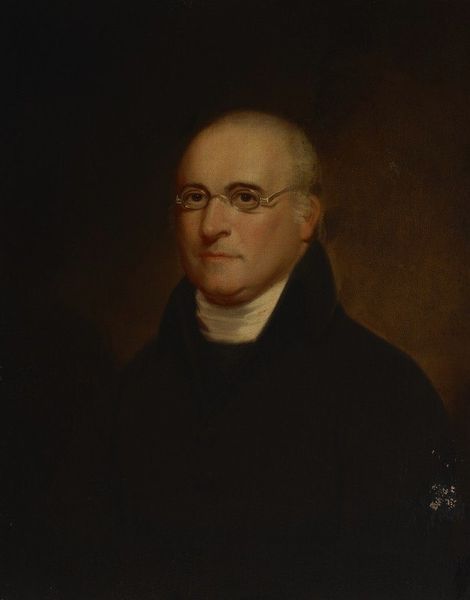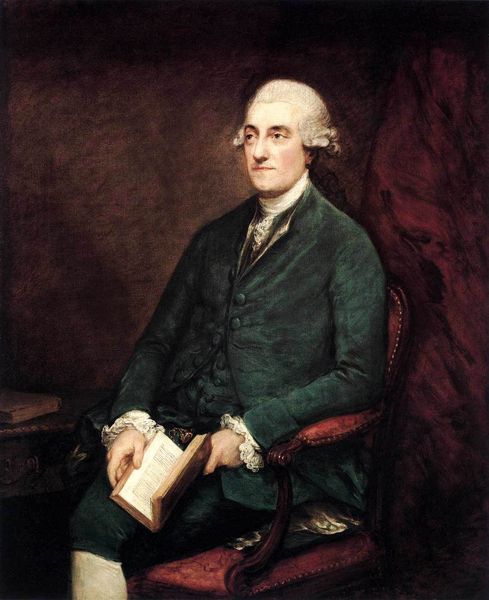
painting, oil-paint
#
portrait
#
portrait
#
painting
#
oil-paint
#
romanticism
#
history-painting
#
academic-art
Copyright: Public Domain: Artvee
Curator: Here we have Sir Henry Raeburn’s "Portrait of John Baillie," rendered in oil in 1817. What’s your initial impression? Editor: It strikes me as very formal, even a little austere. The palette is quite limited, mostly dark tones, save for that pop of color around the neck. The figure’s gaze is direct, almost challenging. Curator: Indeed. Baillie was a significant figure in early 19th-century Edinburgh society. As a prominent banker, his influence extended into political and social spheres. Raeburn, as a leading portraitist, was adept at capturing the essence of such individuals, embedding them within the narratives of power and class. Editor: The composition definitely reinforces that sense of power. Note how the light catches his face, drawing our attention there first, then down to the pen in his hand. That stark contrast pulls the eye in specific directions, imbuing a semiotic tension. Curator: Absolutely. The pen and paper signify Baillie’s intellectual and professional life, his contributions to a rapidly changing society. Consider the broader context: the rise of capitalism, the Scottish Enlightenment—Baillie was part of those movements, benefiting from and shaping them. Editor: Yet, the painting itself seems deliberately restrained. Look at the brushwork: tight, controlled, minimizing expressive gestures. Even the background melts into shadow. It’s almost as if the painting is about suppressing emotion, presenting a mask of control. Curator: Perhaps Raeburn intended to depict Baillie as a man of reason, aligned with Enlightenment ideals, suppressing overt emotional display in favor of rational thought and action. But it also reflects broader conventions of representing men in that era. We must address how gender and social status were being performed through the brushstrokes of this era. Editor: Which brings us back to the formalism. Regardless of its cultural significance, the work employs visual rhetoric, using structure and composition to evoke the status of its subject. The dark space serves as negative space, bringing Baillie sharply into view. Curator: Considering both Baillie's societal positioning and the deliberate construction of Raeburn's artwork allows us to appreciate a visual depiction, offering valuable insight. Editor: And by closely observing the artistic approach, we begin to grasp Raeburn’s choices that led to that specific construction.
Comments
No comments
Be the first to comment and join the conversation on the ultimate creative platform.
